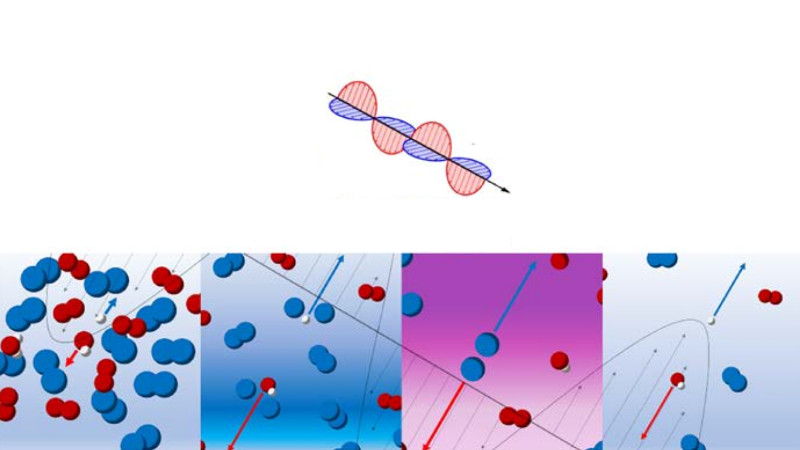Deep inside your smartphone are a handful of interesting miniature electromechanical devices. The accelerometer is a MEMS device, and was produced with some of the most impressive industrial processes on the planet. Sometimes, these nanoscale devices are produced with plasma etching, which sounds about as cool as it actually is. Once the domain of impossibly expensive industrial processes, you can now plasma etch materials in a microwave.
Of course, making plasma in this way is nothing new. If you cut a grape in half and plop it in a microwave, some really cool stuff happens. This is just the 6th grade science class demonstration of what a plasma is, and really it’s only a few dissociated water, oxygen, and nitrogen molecules poofing in a microwave. To do something useful with this plasma, you need a slightly more controlled environment.
The researchers behind this paper used a small flask with an evacuated atmosphere (about 300 mTorr) placed into a microwave for a few seconds. The experiments consisted of reducing graphene oxide to graphene, with the successful production of small squares of graphene bonded to PET film. Other experiments changed the optical properties of a zinc oxide film deposited onto a glass microscope slide and changing a PDMS film from being hydroscopic to hydrophobic.
While the results speak for themselves — you can use a microwave to generate plasma, and that plasma can change the properties of any exposed material — this is far from a real industrial process. That said, it’s good enough for an experiment and another neat technique in the home lab’s bag of tricks.
















Amazig. Just what I just happened to need for some graphene sensors
Ah, reminds me of the good ol’ days and why my advisors at Tech noted I need to consider a better school for graduate work in what I was thinking like not just FTNIR characterization of everything… like Microwave (rotational molecular effects?) or IR (vibrational molecule effects?) or RF (magnetic molecule effects) or Ionizing radiation (electric molecule effects?) catalyzed reactions back in the day beyond my undergraduate requirements.
Seemed then and still is a vast area of opportunity especially if we can lower the energy requirements for the desired effect. Finding that minimal energy of effect.
Now with holography and more 4D methods as I’ve envisioned to not just randomly experimentally deduced… inductively logically reproduce what is planned using electromagnetic pico molding basically. Man, Cornell reads impressive with COTS equipment. There are even ranges of pressures and not only temperatures to consider the effects in systems with other catalysts.
Thanks for sharing Brian!
https://www.youtube.com/watch?v=bftpQKw7sLo
I was doing this two years ago, it would be nice to have some instrumentation to characterize it like they did in the study. Stay in school kids.
“..a PDMS film from being hydroscopic to hydrophobic….” I think you mean from being hydrophobic to hydrophilic.
Atleast this is what we use corona treatments for aka. plasma in the lab.
https://www.youtube.com/watch?v=atVSxvbiPg0
I wonder if i can make this using cheap manual vacuum pump and the “single transistor emp jammer” circuit, which thugs use to mess with slot machines and other electronics.
Of course using mason jar for vacuum chamber :-)
It’s more industrial than you think! We have a (commercially available) re-purposed microwave in our manufacturing facility for photoresist ashing and descumming. e.g. https://www.2spi.com/item/z11001/
Looks like an interesting start for a DIY system vision: https://www.2spi.com/catalog/documents/SPI_PlasmaPrep_Jr.pdf
I’m amazed at the applications now days that I don’t recall finding 20+ yrs ago using microwaves. I just used a commercial off the shelf microwave at STP and unfortunately I don’t have the data post mobile office being stolen.
I feel the same as noted above wanting to do more characterization and staying in school to utilize larger Universities resources. Great advice if there aren’t other resources to move forward with.
I thought these two, even though not related to the article as much, were something different in regards to microwave applications also:
https://kb.osu.edu/bitstream/handle/1811/76704/1/AlexTyrpak.pdf (Bed bug extermination potential)
https://www.hi-techtermitecontrol.com/termite-control-services/microwave/ (Termite extermination)
https://www.sciencedirect.com/science/article/pii/S0260877415002848 (Food drying, though I’d be concerned with higher energy reactions producing products that aren’t as common in other heating methods)
Then of course Kreosan had to demonstrate ghetto style:
https://www.youtube.com/watch?v=-_U-jKavGtg&t=2s
Make me wonder the dynamics of “plasma etching” and “ionizing” of living physiological biochemistry, molecular biology, cell biology and organ system electromagnetic and static issues with the associated tissues when there is even small localized low energy resonance say from heavy metals or metals that ionize more easily. Reaction products are different in some microwave experiments compared to classical reactions.
Edit: Typo “Make…” change to “Makes…”